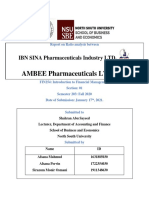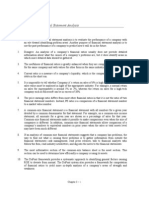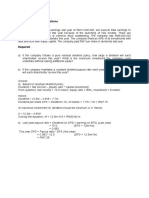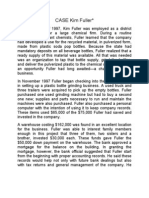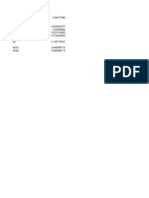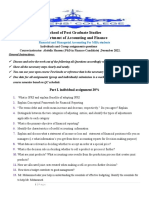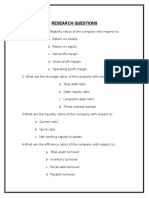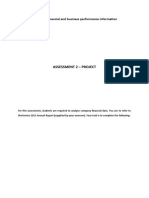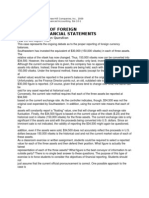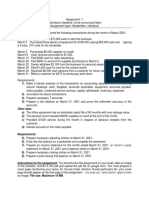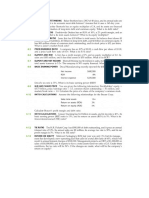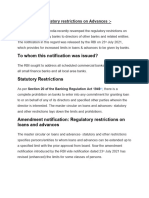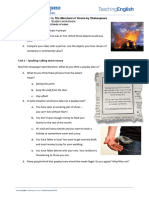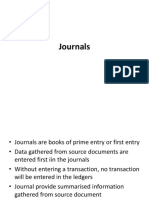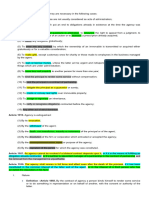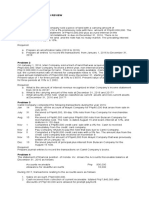0% found this document useful (0 votes)
310 views5 pagesFIN2704 Tutorial 1 Question 3 Solution
The document provides financial information for Dahlia Industries for 2009. It includes details on sales, costs, assets, liabilities, and cash flows.
Net income for 2009 was $574. Operating cash flow was $5,832. However, cash flow from assets was negative $2,048 as the firm invested heavily in fixed assets and working capital, requiring $4,555.80 in new equity financing. Cash flow to creditors was $1,830 in interest payments while cash flow to stockholders was negative $3,255.80 after $1,300 in dividends.
Uploaded by
Andrew TungCopyright
© © All Rights Reserved
We take content rights seriously. If you suspect this is your content, claim it here.
Available Formats
Download as PDF, TXT or read online on Scribd
0% found this document useful (0 votes)
310 views5 pagesFIN2704 Tutorial 1 Question 3 Solution
The document provides financial information for Dahlia Industries for 2009. It includes details on sales, costs, assets, liabilities, and cash flows.
Net income for 2009 was $574. Operating cash flow was $5,832. However, cash flow from assets was negative $2,048 as the firm invested heavily in fixed assets and working capital, requiring $4,555.80 in new equity financing. Cash flow to creditors was $1,830 in interest payments while cash flow to stockholders was negative $3,255.80 after $1,300 in dividends.
Uploaded by
Andrew TungCopyright
© © All Rights Reserved
We take content rights seriously. If you suspect this is your content, claim it here.
Available Formats
Download as PDF, TXT or read online on Scribd
/ 5





